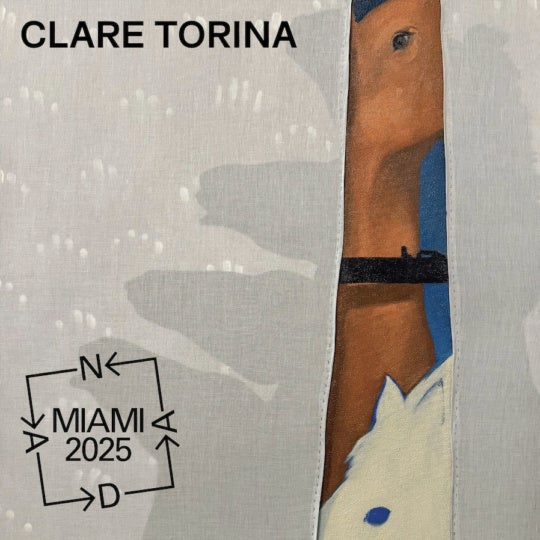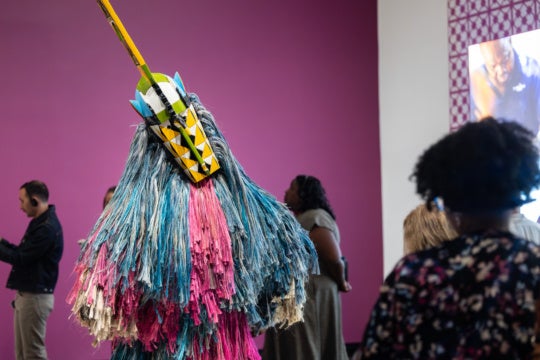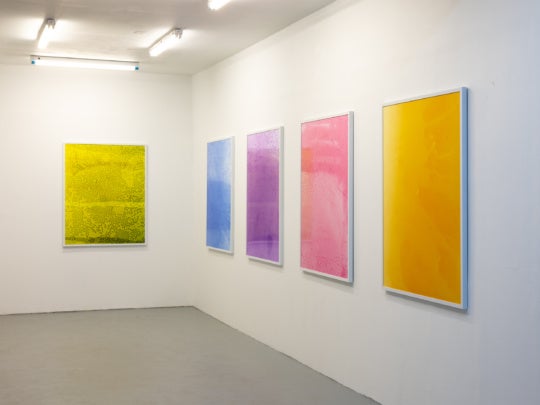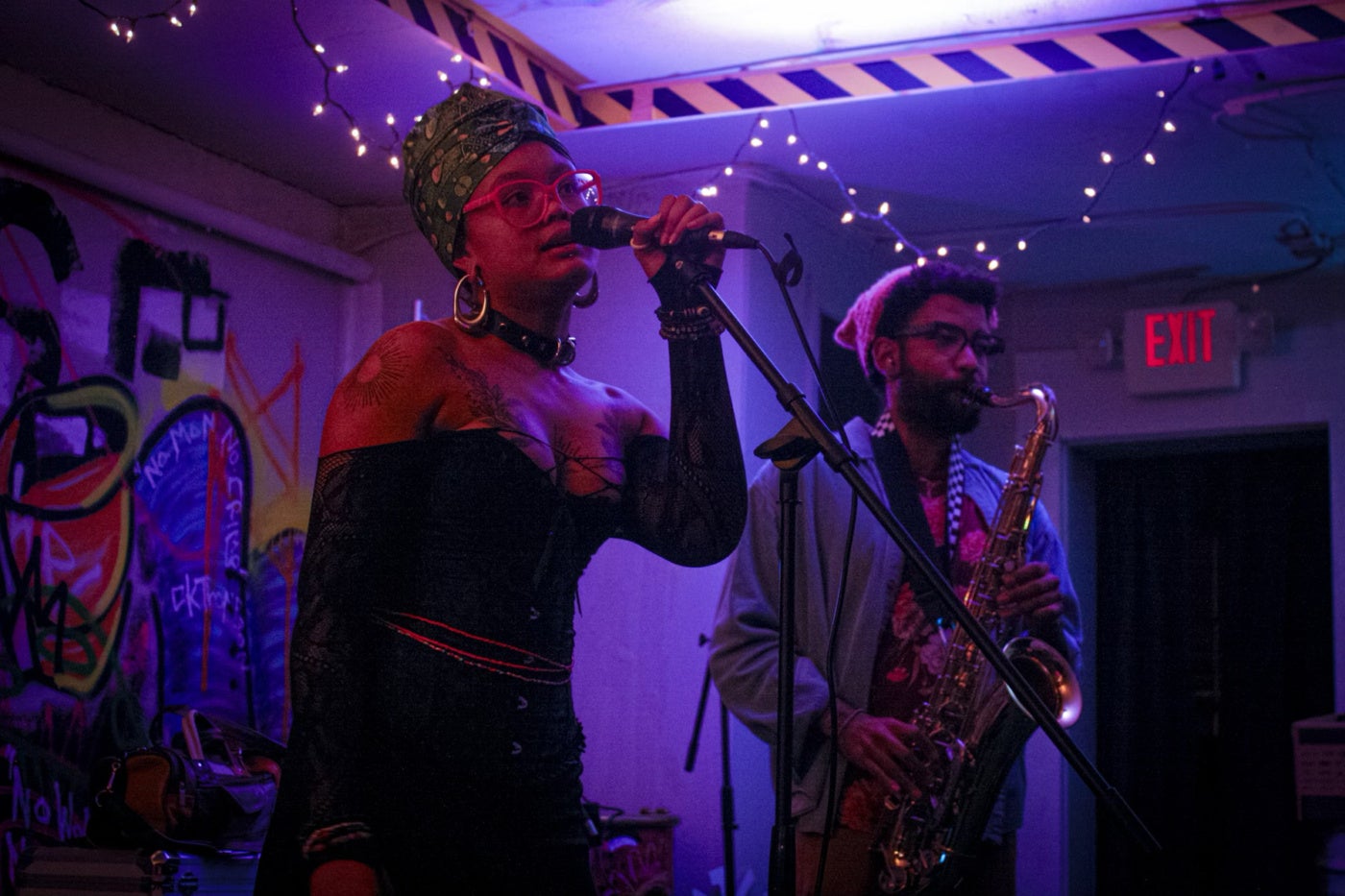
I made my way underground, no metaphor at play here, to attend The Lab, a grand experiment of an event hosted by local nonprofit the D.O.S.E. Collective. Graffitied beams supported the concrete roof of the downtown lower-level parking garage, and the painted rainbow iconography, whimsical mushrooms, and messages to the effect of “you are loved!” solidified the venue’s punk rock aesthetic. A distinctly youthful audience sat on the concrete floor, paying no mind to dust, as the Greensboro band bedrumors performed. Vendors ranging from jewelry makers to tarot readers lined the periphery.
For over a year, D.O.S.E. has been conducting these subterranean gatherings on the first Monday of every month. The hypothesis that undergirds The Lab seems to be, “If you create a space for artists, they will breathe an abundance of life into it.” Under the hazy gel lights on this particular Monday, the theory seemed to prove true.
Looking at the Lab’s lineup of performers, it might be hard to find a common thread between the garage rock aesthetic of the Good Madness, bedrumor’s bossa nova flair, and drag deity Thigh Fiery’s performance of a Vanessa Carlton/Owl City remix. But under the grungy roof and amidst the graffitied support beams, the thread is clear: everyone belongs here.
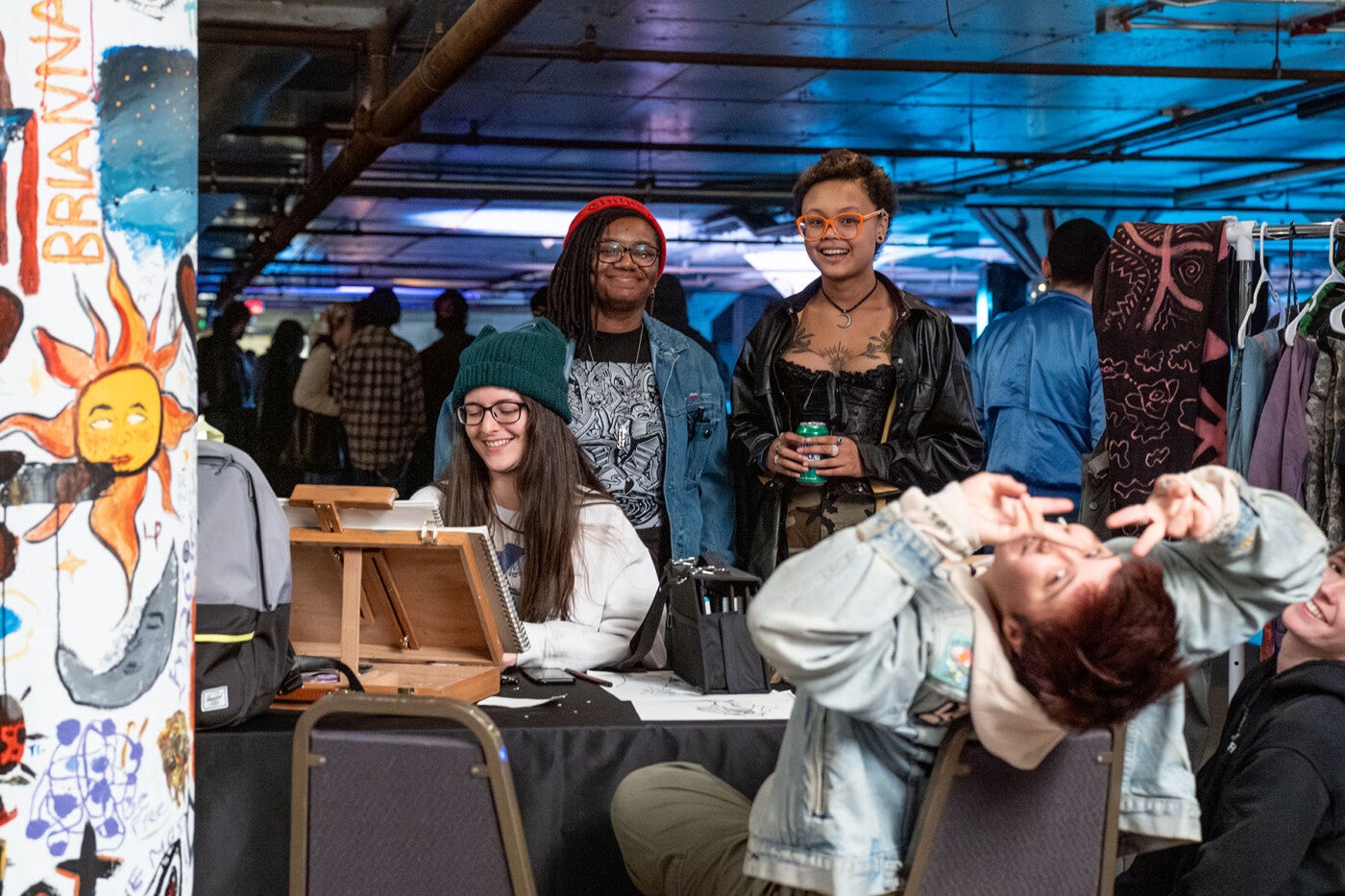
Following the COVID-19 pandemic, Forsyth County, North Carolina, designated $4.5 million, funded through the American Rescue Plan Act (ARPA), to support the local arts.[1] When Taja Seafus, founder of the D.O.S.E. Collective, was offered ARPA funding to host an open mic night at the Arts Council of Winston-Salem and Forsyth County’s white-walled and well-lit gallery, she proposed a slightly altered vision.
“What about the parking garage?” she asked, referring to the shared underground space in the original 1911 Shamrock Mills building, a historic structure whose main floor is now home to the Sawtooth School for Visual Art. The Lab’s new below-ground home base helped Seafus evolve D.O.S.E.’s event into a truly accessible, public-serving gathering, one with enthusiasm and experimentation at its core.
D.O.S.E. Collective came together when Seafus—a lifelong North Carolinian and graduate of the University of North Carolina School of the Arts—felt a distinct pull to deepen her roots in Winston-Salem after earning her degree in Scene Design. Along with fellow artist Leo Morello, the Arts Council’s Director of Production, the two had hopes of bringing to life an immersive theatre experience based on Seafus’s senior thesis. The production, titled Quinn, tells the story of Seafus’s experiences regarding mental health.
As the two explored venues and shared their vision, though, momentum stalled. With barriers ranging from lacking a suitable venue to needing a bigger budget, it became clear that the timing for Quinn hadn’t arrived.
Pivoting away from the original project allowed a new thread to rise. In conversations with emerging and regional artists, Seafus detected a desire for a shared space where artists could work alongside one another. Thus, the seeds of D.O.S.E. were planted.
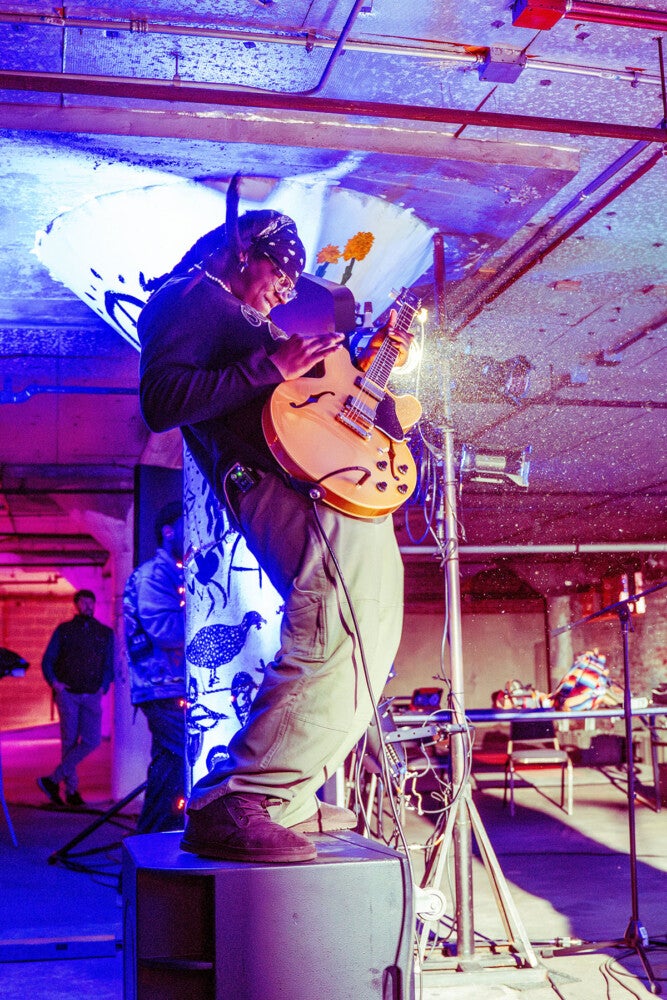
In its early days, D.O.S.E. manifested as The Inbetween, an LLC under which artists gathered together to paint collective murals and local bands left their garages to play for supportive and welcoming crowds. These events often took place in Seafus’s friends’ basements, creating an intimate energy. Far from Seafus’s expectations, music quickly became core to the culture. Rather than boxing out what wasn’t a part of the vision, Seafus embraced it.
Herein lies one of Seafus’s superpowers: her ability to cultivate what is naturally embedded in Winston’s scene has enabled the organization to grow vast and deep roots that provide genuine value to the people it serves.
Two years later, The Inbetween became D.O.S.E., a non-profit with 501(c)(3) status and a robust calendar of events. While Seafus and Morello’s original performance project is on hold, conversations around mental health are still core to the organization’s mission. D.O.S.E.’s name alludes to the four chemicals released during creative processes: dopamine, oxytocin, serotonin, and endorphins.
The transition from LLC to 501c3 felt intuitive to Seafus, as most of the offerings the organization put forth were free or low-cost. D.O.S.E. also received ARPA funding to support the organization more generally. Roughly a year into the project, Seafus realized D.O.S.E. needed much more than just financial support, and she assembled a board of directors to help her achieve the organization’s mission. 90% of the board identifies as LGBTQ+, and 75% are people of color, reflecting the network of artists that D.O.S.E. supports.
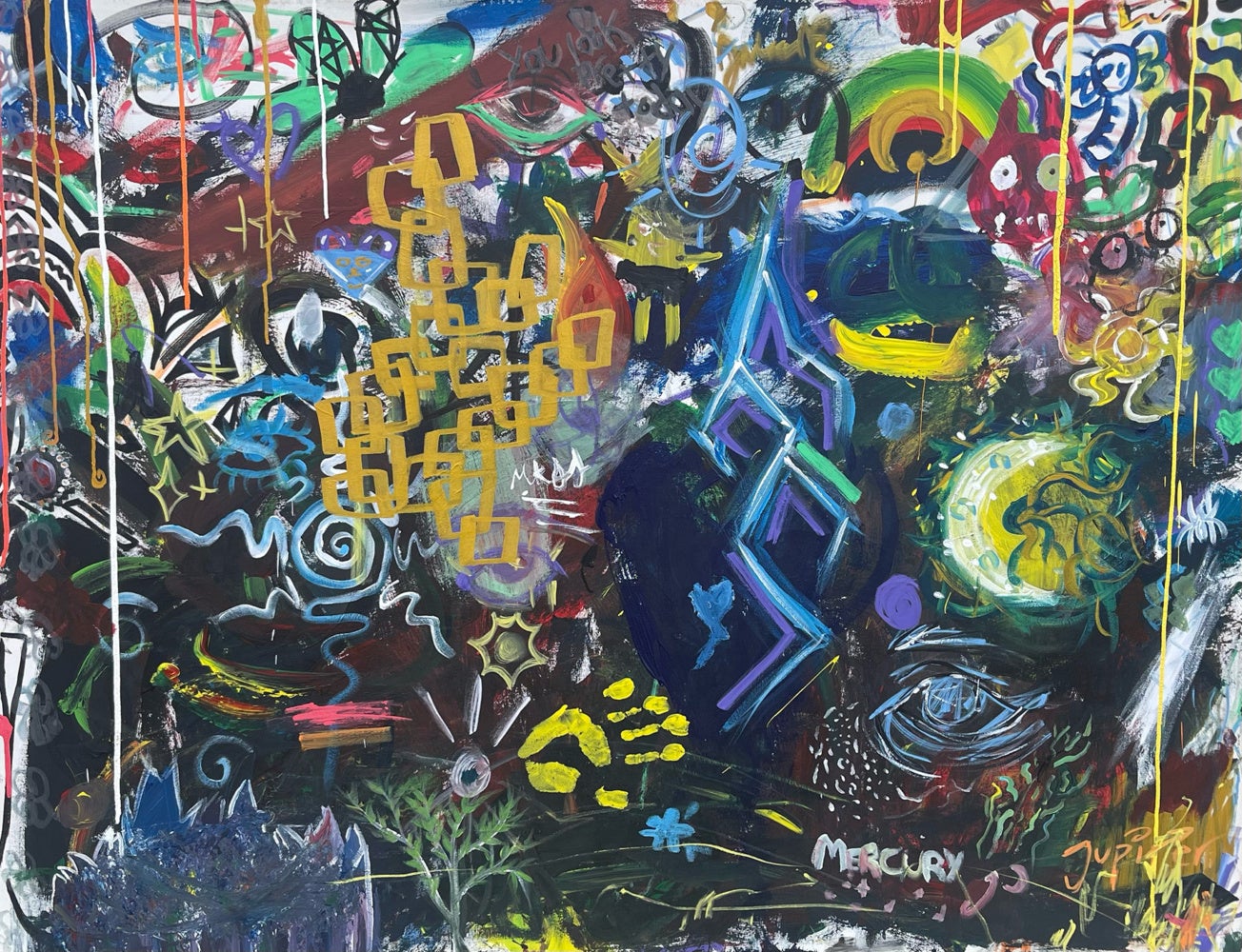
The Lab is only one of D.O.S.E.’s initiatives. Their Trade Street location, in Winston’s Arts District, houses a gallery representing several artists. One such artist is Jasmine (Jaz) Neverson, a visual artist by practice. She specializes in painting the manifestations, goals, and dreams of her clients. “Right now, my practice is very focused on artistic wellness,” Neverson shared, adding that she has particular care for cultivating this within other Black artists.
Neverson first stepped into the D.O.S.E. community at Open Gym, an organic jam session where all instruments and skill levels are welcome. At that event, Neverson heard about the upcoming exhibition Gallery Red. While chatting with Seafus, Neverson was convinced to contribute work to the exhibition. “It didn’t feel like a brave jump when I did it,” Neverson said, crediting the ease to Seafus’s invitation and encouragement.
“Being able to see another Black woman talking to me directly and saying, ‘Hey, your art has value here,’ that meant the world to me.” In the past, Neverson had been intimidated by various barriers to exhibiting their work, but with Seafus, a different circumstance emerged. “I met her, and she just opened [that door] wide.”[2]
Herein lies one of Seafus’s superpowers: her ability to cultivate what is naturally embedded in Winston’s scene has enabled the organization to grow vast and deep roots that provide genuine value to the people it serves.
Behind D.O.S.E.’s gallery space lies a turf carpet, a cove of DIY couches, donated lawn chairs, and community-made murals. This space is home to weekly workshops such as Penny University, which provides resources and skill sharing for those pursuing a career as artists, as well as creative co-working sessions and Open Gym.
In commitment to access, most events are free, and many ticketed events operate on a sliding scale. “Just coming out and supporting people and not even spending a dime is super important for the whole process,” board member and musician Bryson Fulp emphasized.[3]
Fulp and fellow musician Mad Marshall played their first gig together at one of Seafus’s early events, and their experience echoes that of many other performing artists who have received their start at The Inbetween and later with D.O.S.E.
“D.O.S.E. seems to magnetize people, all kinds of creatives, but also just a lot of meaningful friendships,” Marshall said. Whether it is a polished work or a first run-through performance, artists’ offerings are celebrated. “I’ve never once seen anyone perform and not get a roaring applause,” Fulp shared, speaking to the overwhelming support audiences routinely offer.
The emphasis on support and community emerged across all my conversations with participating artists. It’s clear that connection is central to D.O.S.E.’s mission and it’s why the organization is now a central part of Winston’s art scene. D.O.S.E. isn’t just a space to get a leg up in one’s creative career; it provides a support system of genuine care and connectivity for artists of all stages and practices.
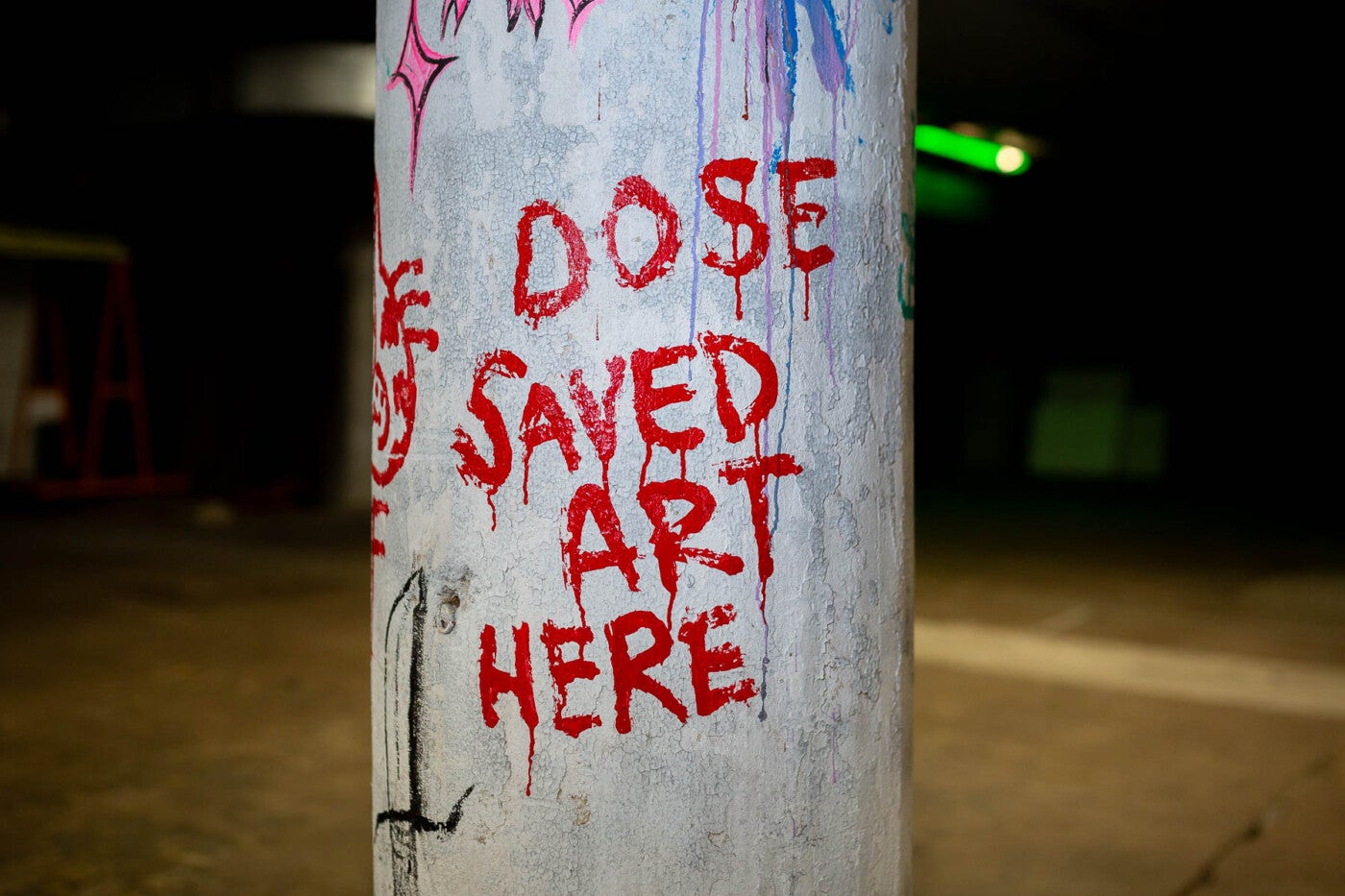
[1] “ARPA Funding: Arts Council of Winston-Salem & Forsyth County.” Arts Council of Winston-Salem and Forsyth County. Accessed August 3, 2024. https://www.intothearts.org/funding/arpa.
[2] Interview with the author, June 7, 2024.
[3] Interview with the author, June 5, 2024.
Learn more about D.O.S.E. Collective’s events and programs, and find out how you can support the nonprofit organization at doseartistcollective.com.
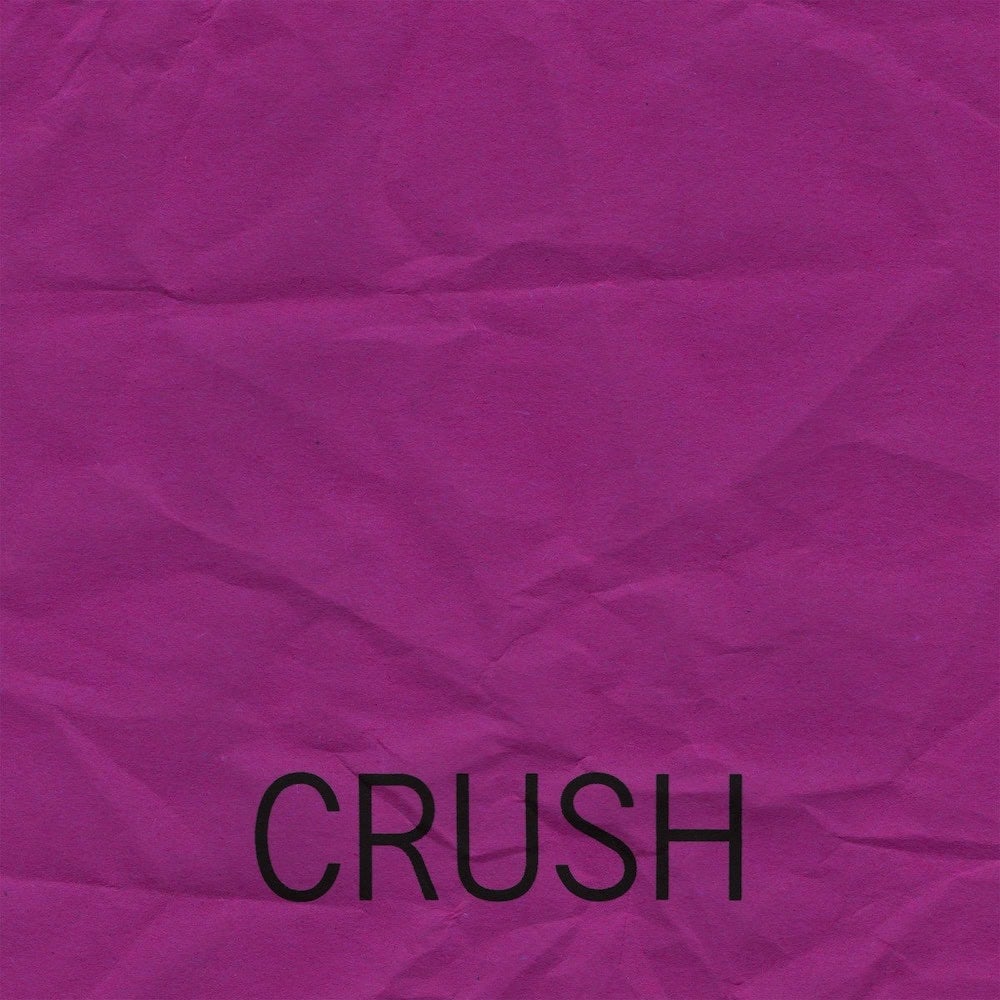
This essay is the first feature release of Burnaway’s 2024 theme series Crush.

